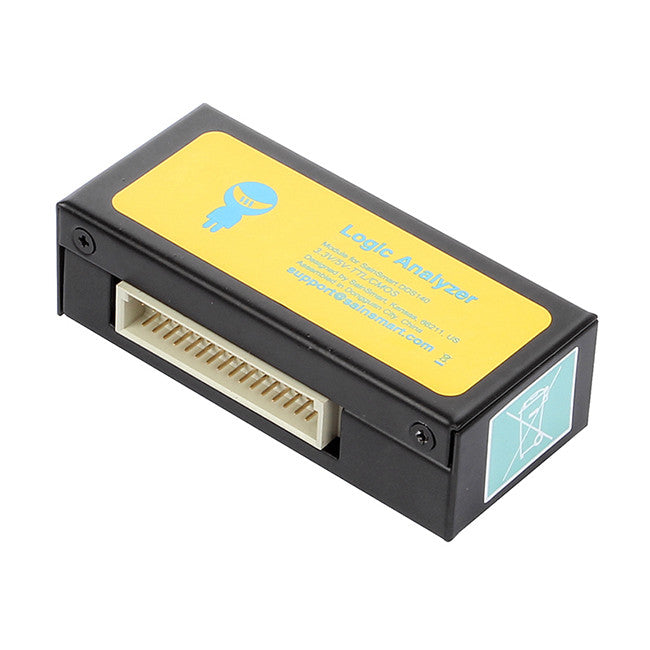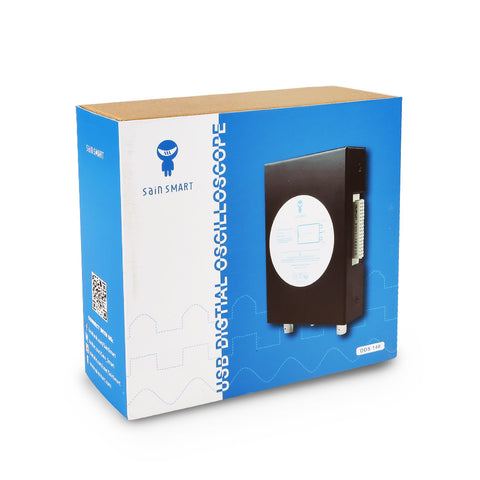
- #Sainsmart dds140 review install
- #Sainsmart dds140 review serial
- #Sainsmart dds140 review drivers
- #Sainsmart dds140 review driver
- #Sainsmart dds140 review full
Anyway I need to do some more testing before I can say anything for sure. So it might be possible to use something else that is be better. The openhantek dds-120 port is using bulk transfers.
#Sainsmart dds140 review driver
Right now the vendor software is using usb interrupt transfers (my driver also). So if you didn't manage to get the first buffer in time there will be a time discontinuity.
#Sainsmart dds140 review full
During that time you need to get the first buffer over to the host because when the second buffer is full the FX2 will start over with the first one. When the buffer is filled it will start filling another buffer. The adc data lines are read by the fx2 and placed in a buffer somewhere on the FX2 chip (lets say 1024 bytes). As far as I understood there is a clock that clocks the adc. And there is a post in this thread where someone says he just started streaming without any start command. One of the lower time resolutions only send one 0x33 packet per 16 data packets. They might always get zeros at the start and then a signal to do the analysis on. The vendor software might do it this way to be able to get a clean part of a continuous stream to analyse. No need to issue a 0x33 command per packet. I can at any time just request more packets without any problem. I think the 0x33 command is a FIFO clear command. I think you are wrong about it using polling. I just sorted out the details which bit to set and found out it was fairly useless. On your blog you list 5 used modes but in your posts you listed 6. Thus I reason that they omitted it in the software. These modes are very close in gain to another gain step. But channel 0 has 0x0A as valid config and Channel 1 has 0x22. Even the software is lying to us when showing "50MHz" (should be "48MHz" -> 24MHz x 2 Channels) Conclusion: 50Mhz -> 48MHz = 24MHz x 2 Channels = 24Msps per Channel 2.4Mhz = 2.4MHz x 2 Channels = 2.4Msps per Channel 240kHz = 240kHz x 2 Channels = 240ksps per Channel The lower samplerates just skip sampling by 1/10, 1/100.

This can't be true with a 24Mhz clock-source in no way, so we'll end up at 24/48Msps like Hantek. From the specs, this scope should do 50Msps, but only when using both channels - single channel is 25Msps. (I must review the trace at IFCLK and CLKOUT.) Maybe its like: 24Mhz crystal -> PLL (48Mhz) -> /2 divider -> 8051 Core + CLKOUT (24Mhz) -> IFCLK + ADC_CLK (24Mhz) Then the 8051-Core, FIFO, and ADC are running at 24Mhz at all time. Read full review.Quote from: doctormord on October 23, 2014, 04:26:38 pm Regarding the EZ-USB Technical Reference Manual: page 125, the IFCLK can only output 30/48MHz from its internal source. I feel that I very much got my moneys worth with this scope. This device would not replace a professional digital scope, but for the very inexpensive price and its small size, it would be an excellent first learning tool for novice to intermediate electronic and engineering students. The user interface is fairly intuitive and I became proficient in using the tool in a short period of time.

The raw data of displays can be exported as a text files. There is a Fast Fourier Transformation (FFT) graphing display available in real time to see the frequency distribution of the signals. There are some graphical interface measuring tools available.

I can record as many frames of data as I want and play it back frame by frame. I can watch two channels of random digital signals in real time or I can freeze the signals and pan forward and backwards about ten fields worth of signals. The DDS 140 software now works very well on my computer.

It turned out that my computer's display needed to be changed to a smaller font in the control panel. At first, I did not understand how the controls worked and I did something that made the program freeze. The DDS 140 software loaded quickly with no errors.
#Sainsmart dds140 review drivers
I ended up uninstalling all the computer's USB drivers and restarting my computer so I could freshly try the driver installation again.
#Sainsmart dds140 review serial
The driver installed under "Universal Serial Bus devices" as "Win Usb device". Also, for my computer, the driver was not installed under the Device Manager's "Other Devices" heading as is stated in the installation directions.
#Sainsmart dds140 review install
When I plugged in the device, Windows 7 kept wanting to install what it thought was the best driver. I had more trouble loading the driver software. I had trouble loading the 3 inch CD into the DVD player but eventually got it to read. I have a Dell T3400, 64 bit, Windows 7, workstation with a NVIDA Quadro NVS 290 graphics card. I'm pleasantly surprised with the abilities of this new tool. I thought I would take a chance with the DDS 140. My current analog scope was inadequate to investigate digital signals for a recent project.


 0 kommentar(er)
0 kommentar(er)
